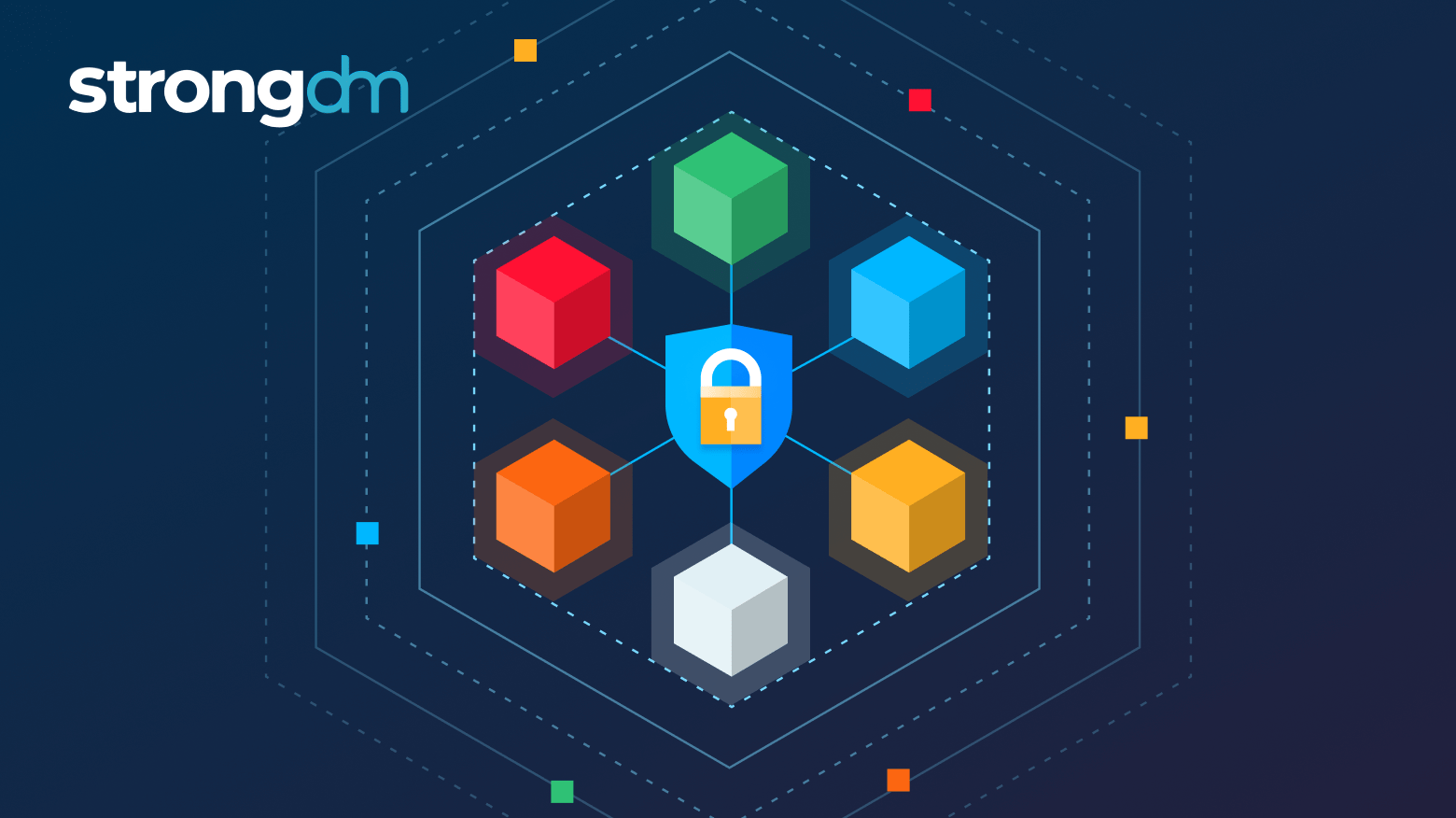Simplify Database Authorization with Policy-Based Action Control

Contents
Built for Security. Loved by Devs.
- Free Trial — No Credit Card Needed
- Full Access to All Features
- Trusted by the Fortune 100, early startups, and everyone in between
You trust your privileged users—you've granted them access to work on a database because they’ve earned that trust. But what happens if something goes wrong? What if a trusted user decides to exfiltrate sensitive data before leaving the company? Or what if they’re working late at night and accidentally attempt to drop a critical table in production? The consequences of these types of actions, whether intentional or unintentional, can be devastating.
Wouldn’t it be reassuring not just to have a record of what happened but to be able to stop the action before it’s completed? Imagine having policies in place that limit the number of rows a user can return from a query, preventing the unauthorized download of an entire database. Or having a system that requires validation before potentially destructive commands, such as a multi-factor authentication (MFA) prompt, before allowing a command like "DROP TABLE" to proceed in production. Modernizing database authorization with these kinds of controls not only strengthens your security posture but also provides peace of mind in an increasingly complex and risky digital landscape.
Enterprises have aggressively modernized their infrastructures over the past decade, rapidly adopting cloud technologies, microservices, and agile methodologies to enhance operational efficiency and scalability. However, as this shift has happened, security policies and guardrails have not been aligned at the same pace, and this is particularly the case for database authorization. Databases, often the workhorses of internal IT environments, are now more distributed and dynamic, necessitating a fundamental shift in how access and security are managed.
Modern data environments present different operational challenges
Fine-grained, Policy-Based Action Control for Database Security
With fine-grained, policy-based action control, StrongDM provides the necessary security rigor for database authorization in complex, decentralized, and dynamic environments. Unlike legacy PAM solutions that apply broad, static permissions, StrongDM allows for the creation of highly detailed, context-aware policies that govern specific actions users can perform on databases. This approach ensures that access is granted not only based on who the user is but also on what they are trying to do, when, and under what circumstances.
How Fine-Grained Policy Control Works
At the core of StrongDM’s approach is the ability to define and enforce policies tailored to an organization's precise security, compliance, and operations needs. Administrators can set up rules that dictate exactly which actions a user can perform—such as read, write, execute, or delete—on specific databases or even individual tables or records within those databases. These policies can be as granular as needed, applying not just to entire user roles, but also to specific contexts, such as the time of day, the user’s location, or the sensitivity of the data being accessed.
For example, a policy might allow a developer to read data from a production database during business hours but restrict write permissions to a staging environment. Similarly, a policy could permit a data analyst to query customer information but prohibit them from accessing payment details unless additional conditions are met, such as MFA.
Enhancing Security with Real-Time Adjustments
One of the most significant advantages of StrongDM’s fine-grained policy-based action control is its ability to adapt quickly to changing business conditions. As the threat landscape evolves or as business needs change, administrators can quickly and easily modify access policies to respond to these changes. For instance, when a security threat is detected, StrongDM can immediately enforce tighter restrictions, such as requiring additional authentication steps or temporarily revoking access to sensitive databases.
The ability to quickly adjust security measures can mean the difference between a contained incident and a full-scale breach. By continuously monitoring and adjusting access controls through policies, StrongDM ensures that database authorization remains aligned with both current security requirements and operational needs.
The Zero Trust Approach to Database Authorization
StrongDM’s approach is deeply rooted in the principles of Zero Trust, a security framework that assumes no user or system is inherently trustworthy and requires continuous verification of access requests. In the context of database authorization, this means that every action—whether it’s a simple query or a complex transaction—is subject to rigorous scrutiny and must be explicitly authorized based on the defined policies.
This level of control is a requirement for safeguarding sensitive data in a world where threats regularly come from internal sources. By leveraging fine-grained, policy-based action control, StrongDM not only enforces who can access what but also ensures that every action is appropriate, justified, and securely executed.
StrongDM Provides Security Uniform Security Guardrails for Databases
| What StrongDM Provides | Definition & Importance | How StrongDM Delivers It |
| Minimize Unauthorized Access | These are proactive measures and controls put in place to ensure that only authorized users can access specific databases and perform certain actions within those databases. This is a critical aspect of database security, as it reduces the risk of data breaches, unauthorized data manipulation, and compliance violations. | StrongDM minimizes unauthorized access by providing comprehensive visibility into all database activities and enforcing strict access controls rooted in a Zero Trust security model. The platform records every session in real-time and captures detailed logs of user actions during database access. This visibility allows organizations to see exactly who did what, when, and how, providing a clear audit trail that is invaluable for both real-time monitoring and post-incident analysis. |
| Access and Authorization Policies | Customizable access and authorization policies allow teams to tailor database access controls to meet the specific needs of an organization. Instead of relying on static, one-size-fits-all rules, customization provides the flexibility needed to address the diverse and evolving threats that organizations face today. As business environments become more complex, with users accessing data from various locations, devices, and networks, a rigid authorization model can quickly become a liability. Customizable policies ensure that access controls remain relevant and effective, even as the organization evolves. | StrongDM simplifies the creation, customization, and management of access and authorization policies across the entire enterprise. Through its intuitive interface, administrators can easily define policies that align with organizational needs, reducing the administrative burden typically associated with managing complex security settings. |
| Action-Specific Permissions | Action-specific permissions can be tailored to a wide range of scenarios. For example, an organization might grant a developer read-only access to a production database to facilitate debugging. Similarly, a data analyst might be allowed to run queries but restricted from altering database schema or sensitive records. These tailored permissions ensure that users have the access they need to perform their jobs, without exposing the organization to unnecessary risk. |
StrongDM enforces action-specific permissions, allowing organizations to control not just who can access a database, but what they can do once they have access. This granular control enables administrators to forbid or permit specific actions, such as read-only access, write restrictions, or the execution of certain commands. |
| Fine-Grained, Real-Time Control | Business needs can change rapidly and threats can emerge suddenly. Whether responding to an evolving security threat or adapting to changing business needs, fine-grained policies enable administrators to quickly modify permissions to ensure that access controls remain aligned with the current environment. | StrongDM offers fine-grained, real-time control over database actions, allowing organizations to define and enforce precise access policies. This level of detail is essential in today’s fast-moving business environment, where access needs can change rapidly and threats can emerge suddenly. …make real-time adjustments to access policies. Whether responding to an evolving security threat or adapting to changing business needs, administrators can quickly modify permissions to ensure that access controls remain aligned with the current environment. |
| Centralized policy across your entire database fleet | A company using a mix of modern and legacy databases can rely on StrongDM to provide a unified, secure access management solution across the entire environment, ensuring that all systems are protected with the same level of rigor. | Seamless Integration Modernizing database authorization doesn’t mean disrupting existing workflows. StrongDM is designed to integrate seamlessly with a wide variety of databases and systems, including legacy environments. The platform is also continuously updated to support additional databases and technologies, ensuring that organizations can protect all of their critical assets, regardless of the underlying technology. Compatibility StrongDM is compatible with popular database systems like PostgreSQL and many others. This compatibility ensures that organizations can enhance their security posture without the need for costly and disruptive system overhauls. |
As enterprises continue to modernize their IT environments, the need for a more advanced and adaptable approach to database authorization becomes increasingly apparent. Traditional models, with their reliance on static roles and broad permissions, are no longer sufficient to meet the demands of decentralized, dynamic infrastructures. StrongDM addresses this gap by offering a solution that emphasizes fine-grained, policy-based action control, enabling organizations to manage database access with the precision and flexibility required in today’s complex business environments.
Digital transformation has brought about an era where businesses must create value by deploying technology efficiently and continuously at scale. By adopting StrongDM's modern approach to database authorization, organizations can ensure their data remains secure, access controls are perfectly aligned with current operational and compliance requirements, and they are well-prepared to face evolving threats.
Book a demo of StrongDM and see how our Zero Trust PAM platform can provide what your legacy systems can’t.
Next Steps
StrongDM unifies access management across databases, servers, clusters, and more—for IT, security, and DevOps teams.
- Learn how StrongDM works
- Book a personalized demo
- Start your free StrongDM trial

Categories:

About the Author
Amol Kabe, Chief Product Officer (CPO), spearheads the StrongDM Zero Trust PAM platform. Previously, he was the Senior Director at Google, leading the Zero Trust and Identity and Access Management portfolio for GCP. His career includes executive roles at Netskope, driving its transition from CASB to SASE, and at Riverbed Technology. Amol was also a founding member at Tablus, a pioneer in Data Loss Prevention. To contact Amol, visit him on LinkedIn.
You May Also Like




